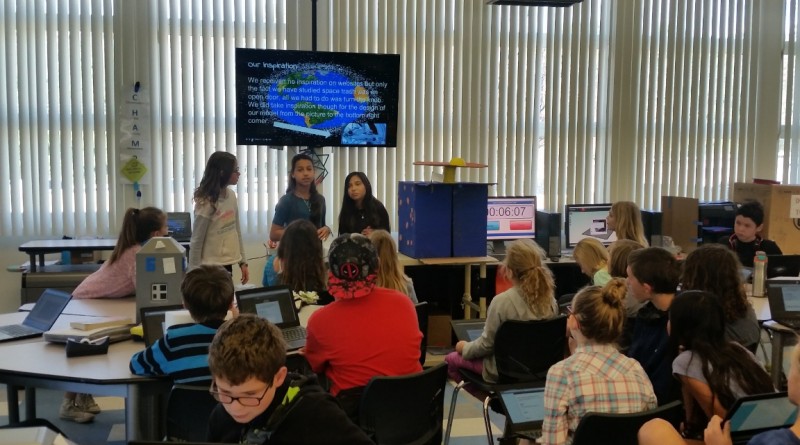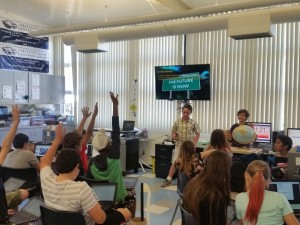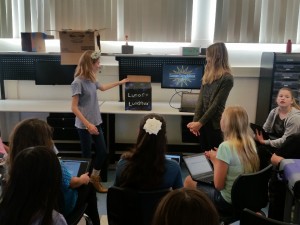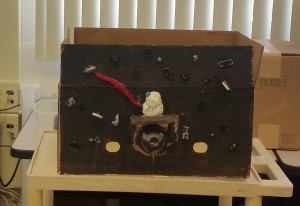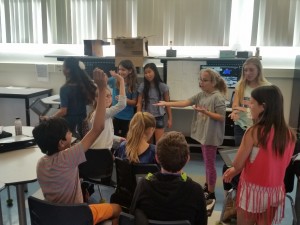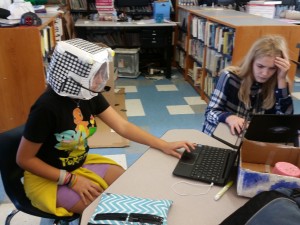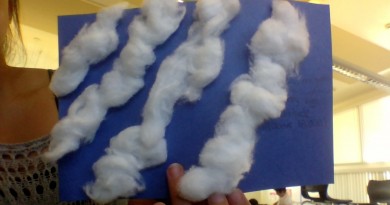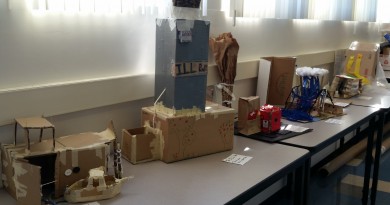Space Engineering
Objective:
Create a solution for human space travel
NGSS Standards:
MS-ETS1-1. Define the criteria and constraints of a design problem with sufficient precision to ensure a successful solution, taking into account relevant scientific principles and potential impacts on people and the natural environment that may limit possible solutions.
MS-ETS1-2. Evaluate competing design solutions using a systematic process to determine how well they meet the criteria and constraints of the problem.
Overview of Lesson:
Space was our second major unit of the year and our second opportunity for a large engineering assignment. Similar to the Weather Engineering assignment, students had to identify a problem and come up with a novel solution to solve it. At this point in the year, the students were falling into similar patterns of choosing to work with the same group of students on these sort of major assignments. I decided to mix things up a little here by requiring students to work with someone that they had never worked with before in my class. Rather than assigning groups, I let them do the negotiating and choosing partners who were out of their initial close group of friends. The new groups did an introductory ice breaker activity to learn about the perspectives of their group mates. I kept a much closer watch over the groups on this project than on other projects and worked with many of the groups to improve their communication and collaboration skills.
Once each group had established a rapport, the group had to choose a problem related to human space exploration. The next several steps guided students through the formal engineering design process, having them conduct research and come up with a plan of their own new solution. Finally, students created a physical model of their idea and put together a presentation sales pitch to sell investors on their new idea. At the end of the project, we had a Presentation Day, where students gave a roughly 3 minute presentation about their project while their classmates took feedback surveys to evaluate the quality of the project.
Areas that students needed help on:
One area I know I need to help students more with is the research phase of the design process. I tell students to see what other similar things have already been invented and they do a quick Google search and declare that nothing came up. The students are so enthusiastic to jump to the planning and building phase that they don’t put the effort into really understanding the challenges of their question. This year many students chose to deal with space trash, but their designs had to be adjusted once I had them look up the speed and size of typical pieces of space trash, which should have been part of their design criteria from the very beginning.
For the most part the groups ended up working well together although some needed quite a bit more support. One specific group needed help because one member was wearing headphones while the group was collaborating. Even though he said he wasn’t listening to anything, his body language was communicating that he wasn’t engaged in the conversation which was backed up by his confusion about the decisions made by the rest of the group. Students had over two weeks of class time to work on this project so few groups needed to communicate outside of the classroom.
Assessment/Scoring:
Students completed a self-reflection survey on their work and a wrote a reflection paragraph on their group’s ability to constructively communicate
Student samples:
Sample student presentations on Trees in Space Space Suits
Document containing sample student responses to communication paragraph: https://goo.gl/6BR6Qn
Conclusions/Reflections for the Future:
This assignment had some of the best quality projects from the students from the entire year. The students were engaged and maintained a very specific focus on their topic throughout the course of the work. This is the second year of doing this project and I appreciated that this year’s projects were much less magical than the first year’s. The final presentation day was rather successful and gave students a satisfactory opportunity to present their projects to their peers. By having two groups present at once, the stress of standing up and talking to the whole class was significantly reduced and students in the audience were able to choose which groups they watched rather than getting burnt out listening to the entire class talk. The most meaningful part of this whole thing was that the students were able to ask the presenters questions at the end of the presentations. They were surprisingly critical of each other and really made the presenters think in order to justify their claims adequately.
I am glad I varied up the grouping for this project. The students for the most part reported enjoying working with someone new and several made a new friend. I noticed that after this project, students were much more inclined to at least consider working with someone else or to be more diverse in their future groupings. Part of my LEC work on this assignment was to have students consider their methods of communication on this project. The students all have Chromebooks and many have phones that they can use outside of school. However, the vast majority preferred to communicate in person about their project, which seems to go against the standard thought that the new generation of students only communicates digitally. I think my classroom environment contributed to this too, because students have been encouraged all year to work with peers and to build these interpersonal skills.
Digital Resources:
Space Engineering Instruction Sheet
Feedback survey to other groups http://goo.gl/VgIyXn
Reflection survey on final project https://goo.gl/3Pbp8G
Reflection write-up on their communication throughout the project https://goo.gl/6AsJdR
LEC Communication and Collaboration Lesson Plan for Space Engineering
